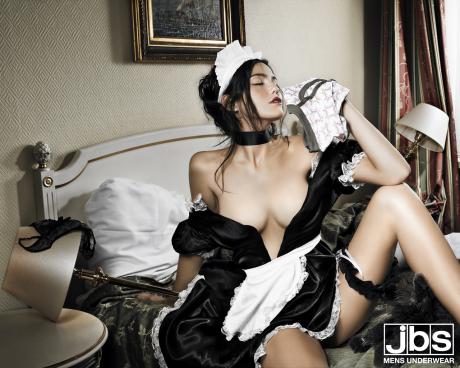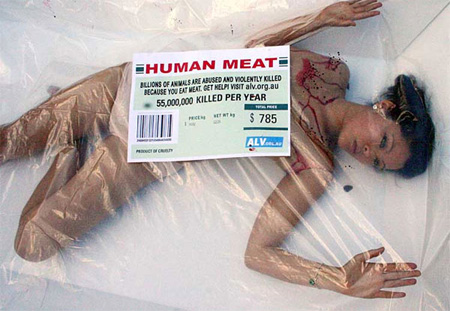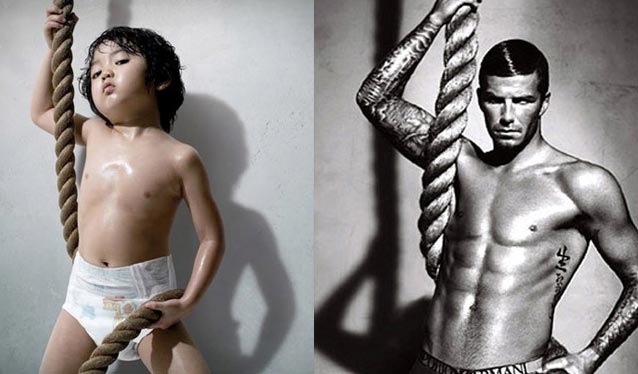
It is obvious that today’s advertising often portrays unrealistic and sometimes offensive messages to persuade consumers to switch to their brands. Jean Kilbourne’s “Killing Us Softly 3” highlights the use of symbolism, gender roles, and hierarchy and the effects that they have on men and women of almost all ages. First, gender roles are heavily emphasized in American ads by portraying the girl as passive, less powerful, innocent YET sexy while boys are portrayed as tough and, in some cases, outright abusive. One ad in particular that struck me as overtly sexist is the skateboard ad that Kilbourne points out. This ad features a male stick figure pointing a gun at a female stick figure and the caption “BITCH” is in huge letters on the seemingly simplistic ad. Is this necessary to sell a skateboard? Do you have to shoot your girlfriend/wife/mom/sister in the head to be good at ollies? Other ads have men asserting their power over women by standing over them, grabbing women by the hair, showing women in “innocent” and vulnerable positions. Only when there is race in the ad does the power hierarchy switch; the young black boy is kneeling down to the young white girl. The symbolic and even overt body languages and text in the ads have a profound effect on society and how we view each other.
The ad that I would like to focus on is an AXE commercial that happens to have an MTV logo on it (2-for-1!). Before seeing Kilbourne’s film, I already thought the commercial was ridiculous and downright sexist. AFTER the film, I noticed that they only make use of the unrealistic body type as well as zooming in only on the white women (I think I only seen 2 black women and it was probably CGI to be the same person) and the women are destroying each other by hitting, knocking down, and jumping over one another to get the rights to have this man. If he buys AXE, then he will be the ultimate male by dominating an array of women. This fits into MTV’s concept of “the mook,” or what a teenage boy is or at least should be all about. By appealing to the mook and stereotypes of the ideal male, perhaps AXE did make a number of sales. I know for a fact that sales of Old Spice went up 107% between May 19-June 19, 2010 due to the “Old Spice guy” ads (Time 10).
I chose to dissect this particular ad because it is one of the many that shows women in an array of wilderness settings (again portrayed as animals) in bikinis so we can get a great tit shot (because all they’re good at doing is being sexy) and racing to reach one man who sprayed his bodyspray (because no woman could ever dare to be without a man). This commercial almost sums up everything Kilbourne explains in her film. The only thing missing is the violence of men toward women, but the women are violent toward each other, so isn’t that just as detrimental? Can we fathom what we are doing to little boys and girls with these messages? Girls will never be perfect because they are too short, have little breasts, and should be vulnerable and passive as well as sexy and innocent. Boys should be tough, shunning the “feminine side” and embracing power and other things that are defined for men only.
The tough part now is creating an alternative commercial for AXE. This ad ties into the concept of the “mook” so much that it’s hard to even attempt to find an alternative mindframe for teenage boys. First, reinventing the concept of the product to not be a vagina-magnet is a good start. Next, coming up with a tagline that is both appealing and less stereotypical (again, how can you appeal to an audience that has become so accustomed to these stereotypes that they probably are unaware of other viewpoints). Maybe the creative director could emphasize that the shower gel will get the consumer clean mentally and physically, much like Orbit gum (clean up a dirty mouth) and “Messing with Sasquatch” commercial (even though these guys are kind of like the mook, the commercial is less objectifying). These commercials have some stereotypical qualities but are not nearly as offensive as this axe commercial. “Use AXE to cut through dirty thoughts and dirty armpits” is way better than “the more you spray, the more you get.” Yes, this does persuade the naïve mook to use MORE, but is it worth hurting the image of 50% of the population in doing so? My ad would be different because it slowly tries to break down these stereotypical barriers without turning the target off completely. Some things cannot be changed too quickly.
After taking a step back and looking at the advertisements I see daily in a critical way, all I can come up with is, “are people really that gullible?” and “why does feeding on these preconceived notions about gender and power influence a shopping choice so greatly?” Obviously some of this is working because the companies keep doing it. Numbers and money are the motivation for the continuation of this harmful strategy. Is it possible to help the public change by creating alternatives to these detrimental views or will it just turn off the target market and be a failure? It’s like the chicken and the egg reference; which came first, the stereotypes or the media that convinced us it was right? Either way, they go hand in hand and one must change to influence the other.
Barovick, Harriet. "The World; Ten Essential Stories."TIME. 176.6 (2010): 10. Print.





































